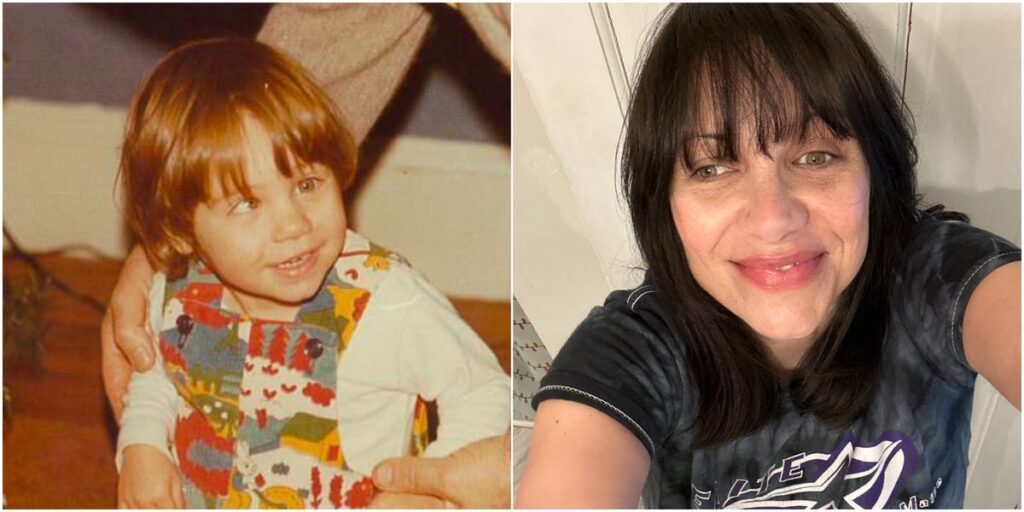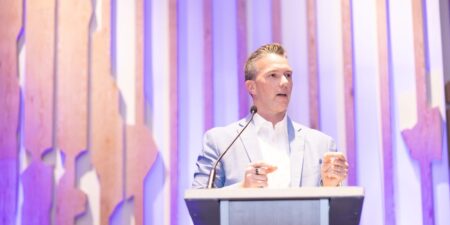“Are you looking at me?” It was a question I was asked often as a kid. One eye would inevitably drift off and out. That was until I learned how to cover my lazy eye, a condition known as amblyopia, with bangs. However, I had a monstrous cowlick at the front of my head that stuck up. Bangs only drew more attention to it, and every hairdresser advised against such a hairstyle.
“You will have to train the bangs,” they warned, “or you will have a bump in your hair that will be quite noticeable.”
Against the advice of these hairstylists, I chose bumpy bangs over a wandering wayward eye. Bangs could be tamed, but the eye couldn’t. And before I made the plunge and embraced bangs, I simply stopped looking at people.
By the time I was 8 years old, I’d had three surgeries
I had three surgeries by the time I was 8 to correct my fully crossed eyes, a condition known as strabismus. I did not remember the first surgery at 2 and a half. The grandmother who raised me told me that I had a reaction to the morphine they gave me, and it took two nurses to hold me down.
“You were a flailing wild animal,” she said.
Unfortunately, I have never forgotten my final eye surgery at 8. I threw up from the anesthesia as I held onto a doll I brought. The doll was wearing a bandaid in the same spot on her arm that I had one from the IV. It was an act of kindness from a nurse who felt sorry for me. The pain seared through not only my eye but the entire side of my face. I remember it still, 41 years later.
Kids called me names, and it had a lasting impact on me
The surgeries helped, though. I no longer had to wear the brown eye patch that earned me the names ‘pirate’ or ‘one-eyed monster’ with the neighborhood kids. I punched one of those kids in the nose. While it bled, I felt a power I never had. It was the first time I stuck up for myself; it wouldn’t be the last.
I traded one hard-to-name eye condition, strabismus, for another, amblyopia, and my cross-eyes became a lazy eye. I went from a kid pirate to an inattentive kid who never looked anyone directly in the eyes. I couldn’t.
People wondered why one eye looked at them, and the other drifted toward another location across the room. It happened more often when I was tired. I tried to put a positive spin on it.
“I can see two things happening at once. Can you do that?” I’d ask. Of course, they couldn’t, and they didn’t want to. In truth, neither did I. Though my lazy eye does impact my vision and allow me to see two different things, it also makes my depth perception a nightmare. The weak eye becomes weaker as the brain relies on the strong eye to do more work.
For me and those affected by this eye condition, amblyopia can cause significant insecurity. It was another way for me to feel different from all the other kids I grew up with.
As a kid raised by grandparents back when such an arrangement was very rare, I already felt different. Being an orphan was hard enough, but being an orphan with goofy eyes was unbearable. I tried to cover up the eye or make up cool stories about it. Yes, I’d been abducted by aliens in an experiment gone awry or kicked in the head by a wild horse.
I tried to focus on the positive as I grew older, but it’s still difficult sometimes
As I got older, I stopped focusing so much on what other people thought. I still got upset when people noticed, but I did my best to play up other features like my high cheekbones or perfectly straight teeth. I thought if I focused more on the positive things, others would too.
Of course, when I went into education and began working with kids who noticed everything, I was returned to my childhood days.
“Mrs. Johnson, are you looking at me?” they would wonder. Or, “What’s wrong with your eye?” they would ask, because kids are honest and curious. In those moments, I became the embarrassed little girl again. Even as an adult, it remains difficult to ignore the comments.
During the pandemic, when masks became a necessary and constant accessory, it brought my eye back into focus. I had no way to play up other features I used to rely on when they were hidden under a mask. When people looked at me, all they saw were my eyes. While I often think of having another surgery to correct my drifting eye, I’m unsure if it’s worth it. I’m almost 50, and the expense of the surgery and time I’d need to recover may prove to be too much.
I suppose there are worse things. At least I no longer have to feel the sticky clinging of that brown eye patch. As a special education teacher, I also use my eye condition to teach the kids I work with that it’s OK to be different. We are all unique, and while my eye drifts, I can see two different things at the same time. Other people can’t. I think that’s pretty cool.
Read the full article here
















